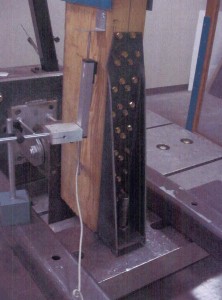My apologies for being late with my blog post this week. We are having our once a year big sales meeting, so I’ve been traveling to the Midwest to participate. Speaking of traveling, several times each year, we invite our newest employees to our home office in Pleasanton, California for a week-long Sales and Product Orientation class. Although originally envisioned as detailed product knowledge training for our sales people, the class has evolved over the years to include people from all areas of our business such as finance, accounting, IT, purchasing, quality, marketing, and (of course) engineering.
I do one presentaton for the class explaining the importance of a continuous load path in a building, and another covering the history of innovation that led to some of our products. It is a great opportunity for me to meet my new coworkers by spending some time with them before they embark on their careers in different parts of the country (or world!).

My favorite training session I do for the class is about product development and testing, which includes a tour of our test lab in Pleasanton. We go over a lot of testing basics – how we select lumber, get parts made, build setups and run the tests. For a demonstration, I used to run a simple joist hanger test and also a holdown test. Usually I’ll pick a heavy holdown to test, since those make an impressive bang when the steel breaks, and then everyone jumps and gets a good laugh out of it.

The lab technicians running the test got bored with holdowns, so they got a little more creative in what we test. Last year we tried crushing soccer balls and basketballs. Those were fun because the balls deformed in weird ways and deformed a lot, so there was a great deal of anticipation of the final pop. But they didn’t get a whole lot of load. This year, we stepped up to crushing a bowling ball. Not much deformation, but LOTS of load, and they do make quite a loud bang (which my camera didn’t do justice). Here’s this summer’s bowling ball test in slow motion:
We kept the bowling ball fragments, so we were thinking of repairing it with epoxy and carbon fiber to retest for the next class we do.
So how much load do you think a basketball can take before popping? How about a bowling ball (it was a 12 pound ball, if that helps?) Let me know in the comments!
– Paul
What are your thoughts? Visit the blog and leave a comment!


Just a guess, but 25 kips, and I like the OSB backstops.
Tom Skaggs
APA
First time we didn’t have the backstops, just plexiglass in front for peoples safety. A fragment shot out near the equipment in back of the press, so we added the OSB. We still use the backstops to catch flying stuff from other tests.
Hi Afaq – We don’t have an online archive of back catalogs, but please call Technical Support at: (800) 999-5099 and they can get you what you need. Thank you!
Fantastic blog post , For my two cents , people are requiring a a form , We filled out and faxed a fillable document here
http://goo.gl/l7G4ZO